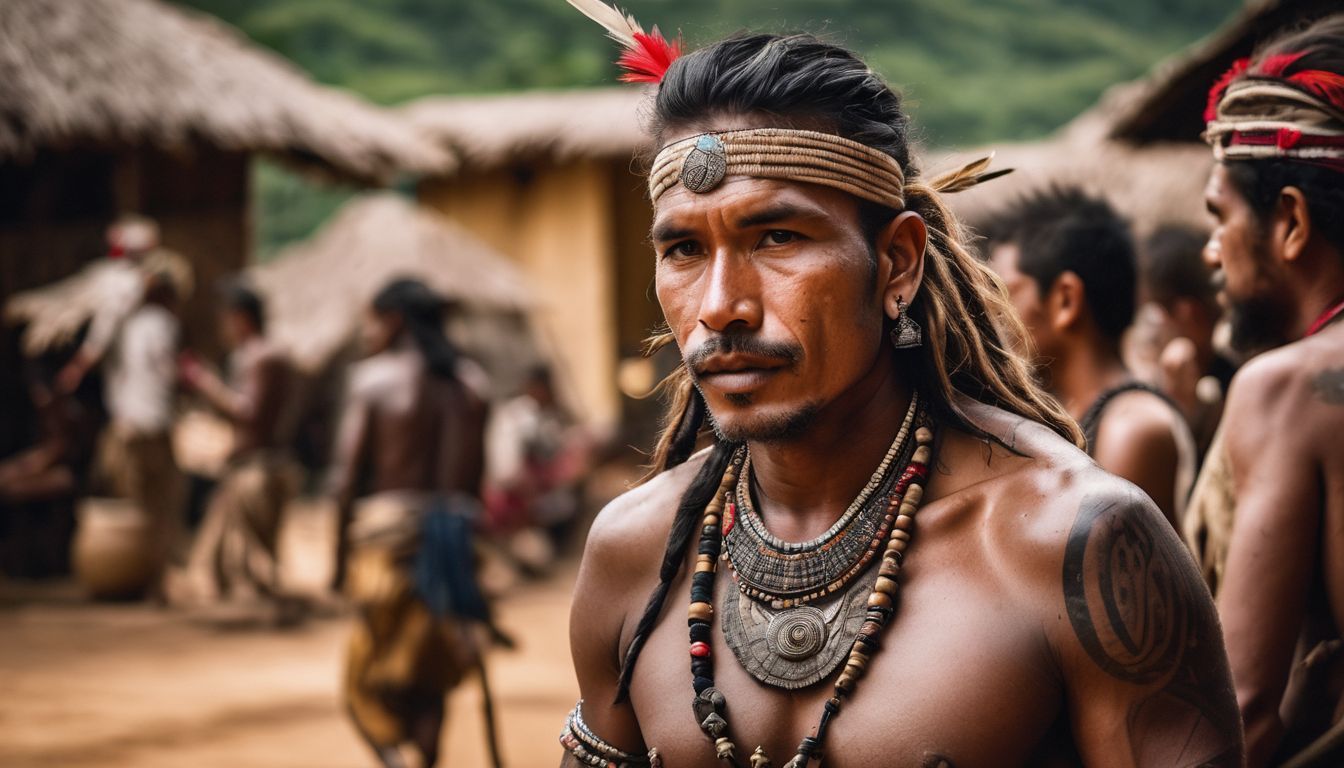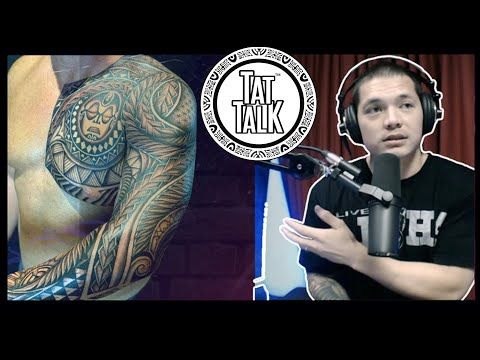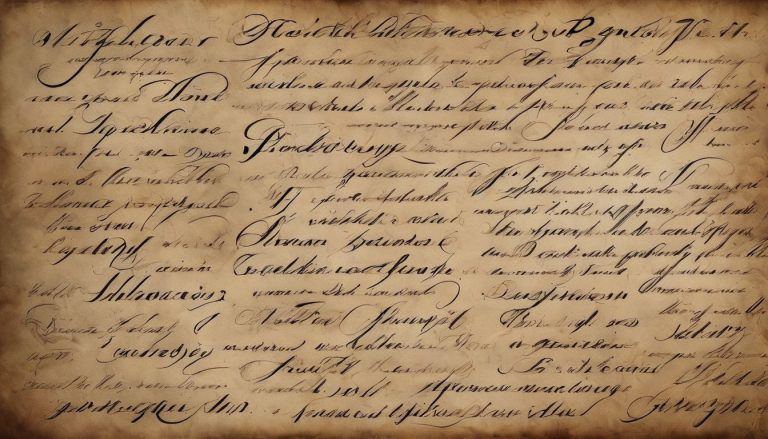The Meaning and Significance of Tribal Tattoos
Choosing a tattoo is more than picking a design—it’s about expressing an identity. Did you know that tribal tattoos were once unique symbols of cultural heritage and status? This article will dive into the fascinating world of tribal ink, revealing its rich meanings and why they still captivate us today.
Discover your connection to ancient traditions with every line!
Key Takeaways
- Tribal tattoos originated as important cultural symbols within indigenous communities, often reflecting a person’s social status, achievements, and identity.
- Placement of tribal tattoos on different parts of the body has specific meanings in various cultures, signifying rites of passage, connections to heritage, and personal stories.
- Modern interpretations of tribal tattoos sometimes lead to cultural appropriation issues; it’s crucial for individuals to understand and respect the origins when choosing these designs.
- Tribal tattoo designs vary widely from Polynesian geometric patterns to African bold line work, each with its own traditional significance tied to culture and history.
- Despite controversies over their use today, tribal tattoos continue to be a powerful way for people to express individuality while honoring ancestral roots.
History of Tribal Tattoos
Tribal tattoos have a rich history, with origins deeply rooted in cultural significance and tradition. They have evolved over time, reflecting the changing values and beliefs of different tribes and indigenous communities.
Origin and cultural significance
Tribal tattoos have deep roots in indigenous cultures, often reflecting a person’s status or achievements. Long ago, warriors and leaders would receive these traditional tattoos to display their strength and triumphs.
Each design carried its own weight and tale, telling of hunts, battles, and victories that were personal to the wearer. These ancient tattoos served as markers of identity, setting one tribe apart from another.
In Africa, the intricate patterns inked on skin told stories of courage and character. Every line held meaning; every symbol was a silent testament to a person’s life journey or spiritual beliefs.
Polynesian tribes favored placing their tribal body art on limbs and shoulders to express boldness and valor. Through these cultural tattoos, communities recorded history on flesh instead of paper—preserving rituals, heritage, and philosophies for generations to come.
Evolution of tribal tattoos
Tribal tattoos have evolved over time, with their origins deeply rooted in ancient cultural practices and traditions. These tattoos were initially used as a way to distinguish one tribe from another, but they have since become a popular form of self-expression and art.
As different tribes encountered new cultures and influences, the designs and meanings of tribal tattoos also changed, adapting to reflect shifting beliefs, values, and societal norms.
Ancient Polynesian tribes marked their bravest warriors with intricate tribal patterns on their limbs and shoulders as a symbol of strength and courage. On the other hand, African tribes used tattoo designs to represent an individual’s character or strength.
Over time, these traditional tattoos have transcended their original purposes and now hold diverse meanings for wearers worldwide.
Meaning and Symbolism of Tribal Tattoos
Tribal tattoos often depict rites of passage, such as coming-of-age ceremonies or wartime accomplishments. They also represent clan affiliations and honor ancestors and heritage, serving as powerful symbols of identity and cultural significance.
Depicting rites of passage
Tribal tattoos often symbolize rites of passage, marking significant milestones in a person’s life within the community. In some cultures, these tattoos are earned or given upon reaching adulthood, marriage, or achieving personal growth and development.
Each inked design holds deep cultural and spiritual meaning as it signifies an individual’s transition from one stage of life to another. For instance, in Polynesian tribes, intricate tattoo designs were used to honor a warrior’s bravery and accomplishments in battle.
In African tribal communities, tattoos were awarded as symbols of maturity and readiness for adult responsibilities. Similarly, among Indigenous people across different regions worldwide, tribal tattoos carry stories of initiation into manhood or womanhood.
Representing clan affiliations
Tribal tattoos often signify clan affiliations within a community, symbolizing unity and belonging. These tattoos serve as a visual representation of familial ties, ancestry, and shared values among members of the tribe.
The intricate designs and patterns of tribal tattoos can carry specific meanings unique to each clan, reflecting their distinct identity and heritage. In many indigenous cultures, these tattoos also function as a form of identification within the community, further strengthening the bond among its members.
The symbolism inherent in tribal tattoos reflects the deep-rooted connections between individuals and their clans, serving as enduring emblems of pride and solidarity.
Honoring ancestors and heritage
Representing clan affiliations through tribal tattoos is closely tied to the practice of honoring ancestors and heritage. Within many indigenous cultures, tribal tattoos serve as a way to pay homage to the wisdom, strength, and resilience of past generations.
These tattoos often depict symbols or motifs that hold significant meaning within a particular tribe or community. For instance, African tribal tattoos may incorporate designs representing the spirits of ancestors or elements from traditional folklore.
Similarly, Polynesian tribal tattoos often include patterns signifying connections to specific ancestors or historical events. By wearing these ancestral markings, individuals symbolically carry on the legacy and values passed down by their forebears.
Tribal Tattoo Designs and Styles
Tribal tattoo designs and styles encompass a wide range of cultural motifs, from Polynesian patterns to African tribal art. These designs often incorporate anchor and nautical themes, reflecting the rich heritage and symbolism of indigenous cultures.
Polynesian motifs
Polynesian motifs, such as intricate geometrical patterns and stylized symbols, are commonly found in Polynesian tribal tattoos. These designs often represent important values and beliefs within the culture, including courage, strength, and protection.
The use of nature-inspired elements like waves or turtles also reflects a deep connection to the natural world and its significance in Polynesian life.
Many Polynesian tribal tattoos feature a blend of distinct geometric shapes and patterns that hold specific meanings rooted in tradition. It is essential to understand these cultural significances when embracing Polynesian motifs in tattoo design to respect their rich heritage.
African tribal patterns
Continuing from the Polynesian motifs, African tribal patterns boast a rich cultural heritage and diverse symbolism. Each pattern carries deep meaning within African tribes, representing everything from spirituality and traditions to identity and social status.
These intricate designs often incorporate symbols of strength, courage, family ties, or even animals that hold special significance in tribal lore. Moreover, African tribal patterns are characterized by bold lines and geometric shapes that tell unique stories of history and community values.
These timeless designs continue to inspire modern tattoo artists while preserving ancient traditions.
Anchor and nautical themes
African tribal patterns often featured symbols of strength and resilience, while anchor and nautical themes in tribal tattoos are commonly associated with stability, hope, and a connection to the sea.
The anchor symbolizes security and steadfastness, often representing a grounding force or a reminder of one’s roots. Nautical elements such as ships, compasses, and waves can also feature in tribal designs to evoke the spirit of exploration, adventure, and navigation.
These motifs hold significance for individuals with seafaring backgrounds or those seeking to express determination and guidance in their life journey. Tribal tattoos incorporating anchor and nautical themes connect wearers to the deep symbolism of maritime cultures while embodying concepts like perseverance and loyalty.
Significance of Placement
Tribal tattoos are often placed on specific parts of the body to convey personal and cultural meanings, making the placement of these tattoos a significant aspect of their symbolism.
To learn more about tribal tattoo designs and their significance, keep reading!
Common areas for tribal tattoos
Tribal tattoos are often placed on visible areas of the body where they can be easily seen and admired. They hold cultural and personal significance for those who wear them. Here are some common areas for tribal tattoos:
- Shoulders: Traditionally, tribal tattoos were placed on the shoulders to symbolize bravery and strength, showing off the wearer’s courage.
- Arms: Tribal designs on the arms often represent rites of passage or achievements, conveying the wearer’s social status and accomplishments within their community.
- Chest: Tribal tattoos on the chest may symbolize familial ties, love, or honor for one’s heritage and ancestors.
- Back: The back is a canvas for larger tribal designs that convey stories, traditions, or spiritual beliefs through intricate patterns and symbols.
- Legs: Tribal tattoos on the legs can symbolize connections to nature, endurance, or reflect specific roles within the community.
- Neck: Tribal neck tattoos are often worn as a mark of belonging to a particular clan or tribe, representing one’s pride in their cultural heritage.
- Ankles: Ankle tattoos in tribal styles might signify protection or serve as a reminder of one’s roots and traditions with each step taken.
Personal and cultural meanings behind placement
Exploring the personal and cultural meanings behind placement of tribal tattoos sheds light on the significance attached to different body areas. For many cultures, the placement of tribal tattoos reflects an individual’s identity and status within their community.
The act of tattooing specific body parts serves as a visual narrative, representing personal experiences, accomplishments, and connections to one’s heritage. In Polynesian culture, for example, warriors often had intricate designs on their arms and shoulders to symbolize strength and bravery in battle.
Similarly, African tribes utilized facial tattoos as a representation of social standing and spiritual beliefs tied to specific facial markings.
Tribal tattoos were not only symbols of personal pride but also conveyed innate aspects of one’s cultural heritage. The strategic placement across various body areas signified deep-rooted meanings that were deeply embedded within each community’s traditions.
Modern Interpretations and Controversies
Modern interpretations of tribal tattoos have sparked controversies regarding cultural appropriation, but they also offer a way for people to honor their heritage and connect with indigenous cultures.
Discover more about the evolving significance of tribal tattoos in today’s society.
Cultural appropriation
Modern interpretations of tribal tattoos have sparked debates over cultural appropriation. Despite their historical and symbolic significance to indigenous communities, some individuals from different cultural backgrounds have adopted these designs without understanding or respecting their origins.
This has raised concerns about the misuse and commodification of tribal symbols and motifs, leading to clashes between those who believe in the preservation of cultural heritage and those who see tattooing as a form of artistic expression.
Controversies surrounding cultural appropriation are further exacerbated by the commercialization of tribal tattoos, which often overshadow their original meanings. As a result, it is crucial for individuals seeking to incorporate tribal tattoos into their personal expression to understand and appreciate the traditional symbolism behind these designs while also acknowledging the potential impact on communities whose cultures are being appropriated.
Modern adaptations and interpretations
Tribal tattoos have found new meanings and interpretations in modern times. They are no longer limited to representing specific tribes or cultures but have become a popular form of body art, symbolizing personal beliefs, individuality, and connections to heritage.
Today, people from various backgrounds embrace tribal tattoo designs as a way to express their own stories and identities. Many contemporary tattoo artists blend traditional tribal motifs with modern styles, creating unique adaptations that reflect the diverse influences of today’s multicultural society.
As the popularity of tribal tattoos continues to grow, so do discussions around cultural appropriation and respect for indigenous traditions. While some see it as a form of appreciation and homage to ancient cultures, others argue that the misappropriation of sacred symbols can lead to misunderstandings and disrespect towards indigenous communities.
The interpretation and adaptation of tribal tattoos remain an ongoing dialogue between tradition and contemporary expression but ultimately offer individuals a platform for celebrating diversity and self-expression.
Conclusion
In conclusion, tribal tattoos hold deep cultural and historical significance. These symbolic designs represent rites of passage, clan affiliations, and honor for ancestors. The rich diversity in styles and meanings reflect the uniqueness of each tribe’s heritage and values.
Modern controversies around cultural appropriation continue to spark discussions about the respectful interpretation of tribal tattoo art.
FAQs
1. What are tribal tattoos and why are they important?
Tribal tattoos are symbolic tattoos originating from indigenous cultures, used to represent belonging, status, or other significant meanings within the tribal community.
2. Can you tell me about different styles of tribal tattoos?
There are many styles of ethnic and native tattoos such as Polynesian, African, and Filipino tribal tattoo designs that carry deep ritual symbolism unique to each culture.
3. Are there any common symbols in tribal tattoo designs?
Yes! Symbols like the wolf tattoo for strength and leadership, dragon tribal tattoo for power and wisdom, or even an anchor tattoo which can signify stability are common in tribalesque styles.
4. What does a Polynesian tribal tattoo often represent?
Polynesian tattoos typically showcase clan symbolism reflecting personal identity and societal roles within their heritage-rich Tribal Culture.
5. How do I know if a certain type of tribal tattoo is right for me?
Understanding the meaning and significance of indigenous tattoos is crucial before choosing one; it respects the cultural roots while ensuring the design resonates with your own values or story.










